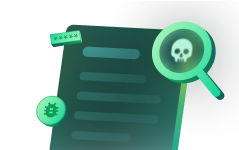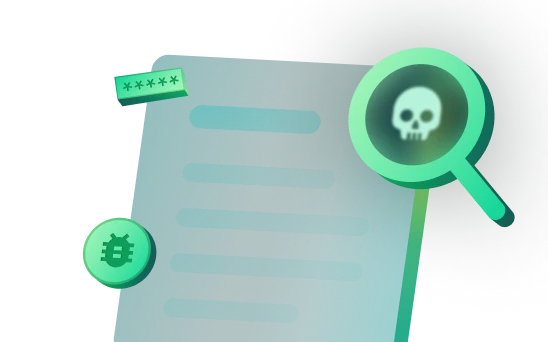
Checkmarx Zero researcher Ariel Harush has discovered evidence of a malicious package campaign that is consistent with live adversarial activity and adversarial research and testing. This campaign targets Python and NPM users on Windows and Linux via typo-squatting and name-confusion attacks against colorama (a widely-used Python package for colorizing terminal output) on PyPI and the similar colorizr JavaScript package on NPM. These malicious packages were uploaded to PyPI.
- Multiple packages uploaded to PyPI with significantly risky payloads were uploaded with names similar to legitimate packages in both PyPI and NPM.
- The tactic of using the name from one ecosystem (NPM) to attack users of a different ecosystem (PyPI) is unusual.
- Payloads allow persistent remote access to and remote control of desktops and servers, as well as harvesting and exfiltrating sensitive data.
- Windows payloads attempt to bypass antivirus/endpoint protection controls to avoid detection.
- Packages have been removed from public repositories, limiting immediate potential for damage.
These behaviors are consistent with targeted adversarial activity and coordinated campaigns. It is likely, based on this pattern, that these were created either to attack a particular target or set of targets. No clear attribution data is currently available, so we do not know whether this campaign is connected to a well-known adversary.
Cross-Platform Supply Chain Attacks Targeting Users of Colorama and Colorizr
In the ever-escalating game of cat and mouse in open-source security, threat actors continue to evolve. This is expected. But this supply chain attack campaign targeting Colorama users stood out not just for its creativity, but for its scope. By combining typo-squatting and related name confusion attacks, cross-ecosystem baiting, and multi-platform payloads, this attack serves as a reminder of how opportunistic and sophisticated open-source supply chain threats have become.
Typos That Hurt: Colorama Copycats
When we uncovered a wave of malicious packages uploaded to PyPI, seemingly designed to trick developers into installing them by mistake, we were immediately concerned. These packages closely mimic the names of two popular libraries:
- colorama (a widely used Python package for terminal color control)
- colorizr (an NPM package used for similar functionality in JavaScript)
One especially unusual facet of this campaign is the cross-ecosystem name confusion tactic. Several of the fake PyPI packages mimic the naming conventions of the NPM package colorizr. This suggests either a deliberate effort to sow confusion, or the possibility of future attacks branching into the NPM ecosystem.
The payloads have Windows and Linux variants, with common features including:
- Accessing and exfiltrating sensitive configuration information
- Establishing remote control / remote access for the attacker
- Establishing persistence and “command and control” (C2) mechanisms consistent with expectation of establishing a long-term foothold
- Attempts to hide from detection and evade endpoint security controls

Windows Payloads: Malware With Persistence and Evasion
Closely examining the package variants that target Windows, we were able to link some payloads back to a GitHub account: github[.]com/s7bhme. This repo hosted various suspicious executables, and a Python project template named branchtemplaterepo.
Key Behaviors Identified:
Environment Variable Harvesting
The malware grabs environment variables from the Windows registry — a tactic that may expose sensitive information such as credentials or configuration secrets.

Persistence via Task Scheduler
The payload delivery process creates scheduled tasks pointing to different file paths, each running a separate payload. This suggests a modular setup where multiple components are deployed together.

Antivirus Awareness
The malware checks for installed security software and alters its behavior accordingly to avoid detection.

We also observed a payload installing and running checks for anti-malware tools on the infected host. We observed several specific anti-detection behaviors, including running the following commands:
"C:\Program Files\Windows Defender\MpCmdRun.exe" -RemoveDefinitions -AllThis command aims to remove all malware definitions from windows defender
Set-MpPreference -DisableIOAVProtection $truePowershell snippet which Disables IOAV (Input/Output Antivirus) scanning, preventing checking files downloaded from the internet for safety
These behaviors show clear adversarial intent: establish a foothold, stay hidden, and collect sensitive data.
Linux Payloads: Advanced Backdoors with Remote Control
On the Linux side, we analyzed two packages: Colorizator and coloraiz. These contain base64-encoded payloads buried in src/colorizator/__init__.py. Once decoded and executed, the payloads initiate a sophisticated infection chain:
The Attack Path:
- RSA Key Drop: A public key is written to /tmp/pub.pem. This key is later used to encrypt the output of a later gs-netcat command before that output is exfiltrated.
- Remote Bash Download: A script is fetched from [https:]//gsocket[.]io/y, likely used to install gs-netcat, a tool for establishing encrypted reverse shells.
- Encrypted Output Exfiltration: The gs-netcat output is encrypted using the RSA key, base64-encoded, and silently uploaded to Pastebin via its API using valid developer and user keys.
- Cleanup: Temporary files are deleted to remove traces of the activity.
The Remote Access Script — A Full-Fledged Swiss Army Knife
The downloaded bash script is portable, stealthy, and feature-rich:
- Persistence through systemd, shell profile injection, crontabs (scheduled task configuration files), and rc.local (startup script) edits.
- Stealth by masquerading as kernel processes and preserving timestamps.
- Remote Control via environment-based configuration.
- Exfiltration and C2 (Command and Control) using gs-netcat and encrypted communication.
- Webhook notifications to platforms like Discord, Telegram, and custom URLs.
This isn’t your average script kiddie toolkit — it’s a highly capable backdoor designed to remain hidden and maintain long-term access.
Key Indicators of Compromise (IoC)
| Type | Value | Description |
| GitHub Repo | [https]://github[.]com/s7bhme |
Repository hosting malicious payloads and templates |
| Webhook URL | [https]://webhook[.]site/dc3c1af9-ea3d-4401-9158-eb6dda735276 |
Endpoint used by malware to exfiltrate data or notify |
| Package Owner | rick_grimes | Uploaded Colorizator(1.2.3, 2.1.2) (Linux) |
| Package Owner | morty_smith | Uploaded coloraiz(1.0.1, 1.0.2, 1.0.3) (Linux) |
| Package Owner | reven | Uploaded coloramapkgsw (0.1.0), coloramapkgsdow (0.1.0) (Windows) |
| Package Owner | m5tl | Uploaded coloramashowtemp (0.1.0) (Windows) |
| Package Owner | dsss | Uploaded coloramapkgs(0.1.0), readmecolorama (0.1.0) (Windows) |
| File Hash (SHA256) | d30c78c64985a42c34ef142fd8754a776c8db81228bafc385c5bd429252e4612 |
Malicious Linux bash script (downloaded by payload) |
| File Hash (SHA256) | daef5255eac4a4d16940e424c97492c6bad8fdafd2420632c371b9d18df3b47f |
Windows payload (x69gg.exe) executed by Python script |
These IOCs are represented in the Checkmarx Malicious Package Protection component, including the Threat Intelligence API, for inclusion into customer programs.

Attribution Is a Challenge
Initially, the similarities in naming and upload timing led us to believe that both the Linux and Windows payloads were deployed by the same actor. But as our investigation progressed, differences in tooling, tactics, and infrastructure suggest otherwise.
At this time, we can’t definitively attribute both payload sets to a single source. They may be separate campaigns exploiting a similar typo-squatting tactic — a reminder of how quickly malicious techniques spread in cybercrime ecosystems.
Recommended Response
While this particular set of packages is no longer available from public sources, defenders should be prepared to detect and respond rapidly to this and similar attack patterns. While individual organization threat models may indicate additional controls and behaviors, we recommend, at minimum:
- Examine deployed and deployable application code for malicious package names and indicators of compromise
- Examine private package repositories and proxies (such as Artifactory); remove any instances of malicious packages and add them to a block list
- Ensure installation of these packages is blocked on developer desktops, test environments, etc.
Checkmarx customers can use Malicious Package Protection features, including our Threat Intel API, to automate many aspects of these tasks
